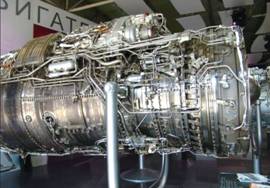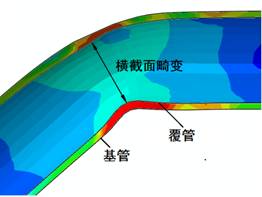1. Development in Research of Bending Process of Dissimilar Material Bimetallic Tube.Developing the plastic bending process of dissimilar material bimetallic tube is an inevitable trend caused by industrial technology development. However, most of the studies on the bending behavior of bimetallic tubes belong to the test of material properties. Only a few literatures have made attempts on the push bending and press bending processes of dissimilar material bimetallic tubes. Research shows that: the interface failure between carrier tube and liner tube, the cross section distortion and the wrinkling are the bimetallic tube defects repeatedly occurring in the bending processes, and these defects have coupling constraints; the reasonable filling (such as the application of a certain internal pressure, the use of reasonable mandrel dies) can be used to suppress the wrinkling behavior of the bimetallic tube; the force transmission loading to the tube is easily blocked due to the existence of the interface layer. However, the rotary-draw bending process can provide evenly distributed pressure whose loading position is also reasonable. Therefore, the rotary-draw bending is suitable to form bimetallic tubes with better plasticity and higher requirements of loading conditions. In recent years, the bent tubes are desired not only to play the traditional function, but also to meet the requirements of design performance, installation space and lightweight. Therefore, developing the high precision and small radius bending technology of dissimilar material bimetallic tube has become a necessary of advanced manufacturing development.  
Fig.1 Applications of the bent tubes in the aerospace field  
Fig. 2 Finite element model of rotary Fig. 3 Bending characteristics of draw bending of the tube dissimilar material bimetallic tube
|
1. Zhu Yingxia, Xiong Hangfeng, Chen Wei, Li Haiping. Research Progress for Bending Process of Dissimilar Material Bimetallic Composite Tube.Journal of Netshape Forming Engineering. 2016, 8: 8-14. 2. Zhu Yingxia, Liu Yuli, Yang He. Effect of mandrel-cores on springback and sectional deformation of rectangular H96 tube NC bending. The International Journal of Advanced Manufacturing Technology, 2015, 78: 351-360. 3. Li Haiping, Liu Yuli, Zhu Yingxia, Yang He. Global sensitivity analysis and coupling effects of forming parameters on wall thinning and cross-sectional distortion of rotary draw bending of thin-walled rectangular tube with small bending radius. The International Journal of Advanced Manufacturing Technology, 2014, 74(5-8): 581-589. 4. Zhu Yingxia, Liu Yuli, Yang He, Li Haiping. Impact of pressure die on springback and section deformation of rotary-draw bending of rectangular H96 tube. The Chinese Journal of Nonferrous Metals, 2014, 24: 104-114. 5. Zhu Yingxia, Liu Yuli, Li Haiping, Yang He. Comparison between the effects of PVC mandrel and mandrel-cores die on the forming quality of bending rectangular H96 tube. International Journal of Mechanical Sciences, 2013, 76: 132-143. 6. Zhu Yingxia, Liu Yuli, Li Haiping, Yang He. Springback prediction for rotary-draw bending of rectangular H96 tube based on isotropic, mixed and Yoshida-Uemori two-surface hardening models. Materials & Design, 2013, 47: 200-209. 7. Zhu Yingxia, Liu Yuli, Yang He, Li Haiping. Improvement of the accuracy and the computational efficiency of the springback prediction model for the rotary-draw bending of rectangular H96 tube. International Journal of Mechanical Sciences, 2013, 66: 224-232. 8. Liu Yuli, Zhu Yingxia, Dong Wenqian, Yang He. Springback Prediction Model Considering the Variable Young’s Modulus for the Bending Rectangular 3A21 Tube. Journal of Materials Engineering and Performance, 2013, 22(1): 9-16. 9. Zhu Yingxia, Liu Yuli, Yang He. Sensitivity of springback and section deformation to process parameters in rotary draw bending of thin-walled rectangular H96 brass tube. Transactions of Nonferrous Metals Society of China, 2012, 22(9): 2233-2240. 10. Zhu Yingxia, Liu Yuli, Yang He, Li Haiping Development and application of the material constitutive model in springback prediction of cold-bending. Materials & Design, 2012, 42: 245-258.
|
